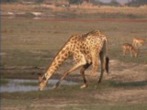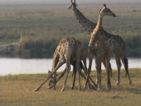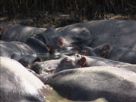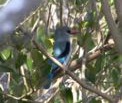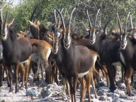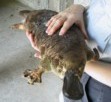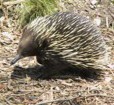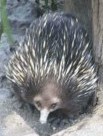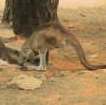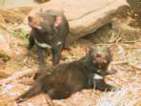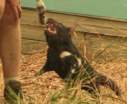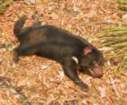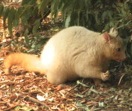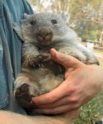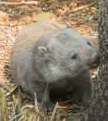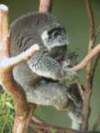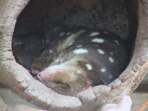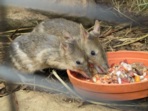ADAPTATIONS OF SELECTED
AFRICAN and AUSTRALIAN ANIMALS
PAUL H. YANCEY
PROFESSOR OF BIOLOGY, WHITMAN COLLEGE (Click here for home page)
From trips to South Africa and Botswana,
Aug. 2001, and Australia, Jan. 2003
See also these webpages: ANIMALS of ICELAND (June 2010 trip); ANIMALS of NEW ZEALAND (1998 and 2012 trips); and
ANIMALS of the AMERICAS in COSTA RICA, AMAZON, TURKS & CAICOS, YUCATAN
(trips to Manaus region, Brazil Aug.
2004; Costa Rica Nov. 2008; Turks & Caicos Nov. 2009; Yucatan Sept. 2010)
|
GO TO Prof. Yancey's Home Page |
I am an animal physiologist, mainly researching the adaptations of marine
animals. I also did a brief physiological study on possums in New Zealand
in 1994. In 2001 I attended an international animal physiology conference
in Botswana. In Jan. 2003 I went to Victoria and Tasmania, Australia, to attend
another international physiology conference. We saw incredible animals at
very close range (on safaris in South Africa, Botswana, Zimbabwe, and wild
animal parks in Tasmania). Here I present some of the interesting physiological
and anatomical adaptations, especially new findings, on some of the wonderful creatures of those two
continents. I also have links to selected websites with more details.
|
|
I. AFRICA: Animals from Botswana and South
Africa (click on pictures for larger versions)
|
Elephants and Water |
|
Elephants and Ground Sound |
|
Giraffes and Blood Pressure |
|
The Heart of a Crocodile |
|
Hippos: Cousins of Whales |
|
The BLACK RHINOCEROS: mother and baby (right). This pair passed close to our jeep in the
Hluhluwe Reserve in S. Africa. They are beginning to thrive is S. Africa
after nearing extinction due to poaching; their horns are prized by some
Asian cultures for their supposed aphrodisiac qualities (for which there is
NO evidence!). Read more about rhinoceros species at exZOOberance. |
The SPOTTED HYENA (right).
Hyenas are of great interest to physiologists because the females are
masculinized, with male-like genitals and aggressive behavior. Read about
research on male and
female brains in 1999. Read about their general biology at The Hyena Pages. |
Here are some other fascinating animals for which I've found
minimal physiological research.
If you are aware of any such recent research, email me (yancey-AT-whitman.edu)
|
The CAPE BUFFALO
(right). In our jeep, our driver took us to within a few feet of this
dangerous animal. Read more about this animal in the Cape Buffalo
Wikipedia entry. |
The BANDED MONGOOSE (right), in Chobe Nat'l Park, Botswana. Read more about them at Animal
Diversity Web, Univ. Michigan. |
|
<--The MALACHITE KINGFISHER. This bird likes to
perch on branches over the water, looking for aquatic prey. Our river guide
in the St. Lucia estuary (S. Africa) took us to within a few feet of this
bird on the tour boat. For information on this beautiful bird, see the Safaricam
encylopedia website. |
<--The beautiful SABLE ANTELOPE, staring at us in our jeep in Chobe Nat'l Park, Botswana. For information on the biology and conservation of this magnificent animal, see the Sable Antelope Website |
II. AUSTRALIA: animals we saw in southern Australia (Melbourne and Tasmania). Click on pictures for larger versions. There is much information on the web about most of these animals. Try in particular the Unique Australian Animals Site and the Tasmanian Parks & Wildlife Site.
A. MONOTREMES: These are mammals that lay eggs! Only two still exist--the platypus and the spiny echidna. Their body temperatures are somewhat lower than
ours, but they do thermoregulate, have hair, and nurse their young like other
mammals.
|
PLATYPUS--An Electricity Detector. Seen here in the Melbourne zoo (this is a stuffed one! The live ones are in a very dim nocturnal habitat where no pictures can be taken).A truly bizarre and endearing creature that swims in streams and ponds using electrical sensors in its duckbill to find prey hidden in the stream bed. The male has poisons spikes on its rear webbed feet. Find out more at Platypus Physiology Website1 and Website2, and broader information at the Unique Australian Animals Site and the Tasmanian Parks & Wildlife Site. |
|
ECHIDNA--An Erectile Snout. Also called "spiny anteaters," they do
eat insects with their tiny sensitive snouts.One recent physiological study
found that the echidna's
snout has a special "push-rod" tissue that inflates
the snout for poking into termite mounds and ant nests. Inflation also
greatly enhancing snout sensitivity. Researchers note that this process is
very similar to what happens in erectile genitalia. |
B. MARSUPIALS: these are also mammals; they give birth to very tiny live young which then crawl to a pouch on the mother's abdomen to be suckled.These pictures are mostly from Tasmania, with a couple from the Melbourne zoo. Some give birth to many more offspring that they can nourish, so that a "survival of the fittest" struggle occurs among the newborns as they race and fight for the few teats in the pouch. For example, the Tasmanian devil may give birth to several dozen babies, which struggle for only 4 teats.
|
KANGAROO--An Efficient Mover. There are vast amounts of information on the web about these famous animals Try the Australian Wildlife 'Roo page, or ExZOOberance. One interesting physiological trait is that 'roos actually use LESS energy as their hopping speed increases! (Except at highest speeds). The secret is probably in the huge tendons in its hind limbs. These act as springs, storing energy when they hit the ground, releasing it on the next hop, and doing so more efficiently at higher speeds. A hop at medium speed also covers a larger distance than at low speed. Overall the distance covered per unit of metabolic energy (like "miles per gallon") improves at moderate compared to low speeds, unlike any other form of locomotion (except gliding by birds in flight). |
SUGAR GLIDER (Tasmania). This marsupial has thin membranes between its fore- and hindlimbs, allowing it to glide from tree to tree. They also like sweet tree sap.See the Unique Australian Animals Site and the Tasmanian Parks & Wildlife Site. |
|
TASMANIAN DEVIL: Super Stomach. An eater of carcasses, a pack of devils may eat every part of a dead animal including bones, using powerful jaws. They also hunt small live prey. They are only found in Tasmania today; we saw several wild ones while driving. Alarmingly, many are now dying due to Facial Tumor Disease. Click this link for more information. See more on the biology of these animals at Unique Australian Animals Site and the Tasmanian Parks & Wildlife Site. |
|
Golden POSSUM (Tasmania) .
Not the same as the American possum!
This may be a variant of the common brush-tailed possum
of Australia. Because of their nice pelts, the latter was introduced by
Europeans into New Zealand, which had no native mammals except bats. The
possum in New Zealand has no natural predators, and has wreaked havoc with
that island nation's ecology. |
Common WOMBAT (Tasmania)--Evolved for Burrowing. These have a hard plate over their lower backs to protect them from predators when they are burrowing. Its pouch faces backwards, to keep dirt out while burrowing. See Tasmanian Parks & Wildlife page--with movies! |
|
KOALA--The Ultimate "Couch Potato*." An eater of eucalyptus leaves, this animal spends 80-90% of its time sleeping (as in the far left picture)! Often they are clinging to small branches, and yet sleep without falling. There is considerable information on the web on this endearing animal. Try this KOALA Website as a fine example, or the Unique Australian Animals website. Pictures here from Tasmania. *a term for a person who sits around all day watching TV from a couch... |
I don't have any anatomical or physiological information on these two interesting marsupials:
|
SPOTTED-TAIL QUOLL, or TIGER CAT (Tasmania). A large meat-eater of eastern Australian forests. See the Quoll Website for information. |
Long-Nose BANDICOOT (Tasmania). These rare hopping marsupials are almost extinct,
in part due to killing by foxes deliberately introduced into Australia by
hunters.See the Unique
Australian Animals Site and the Tasmanian
Parks & Wildlife Site. |





